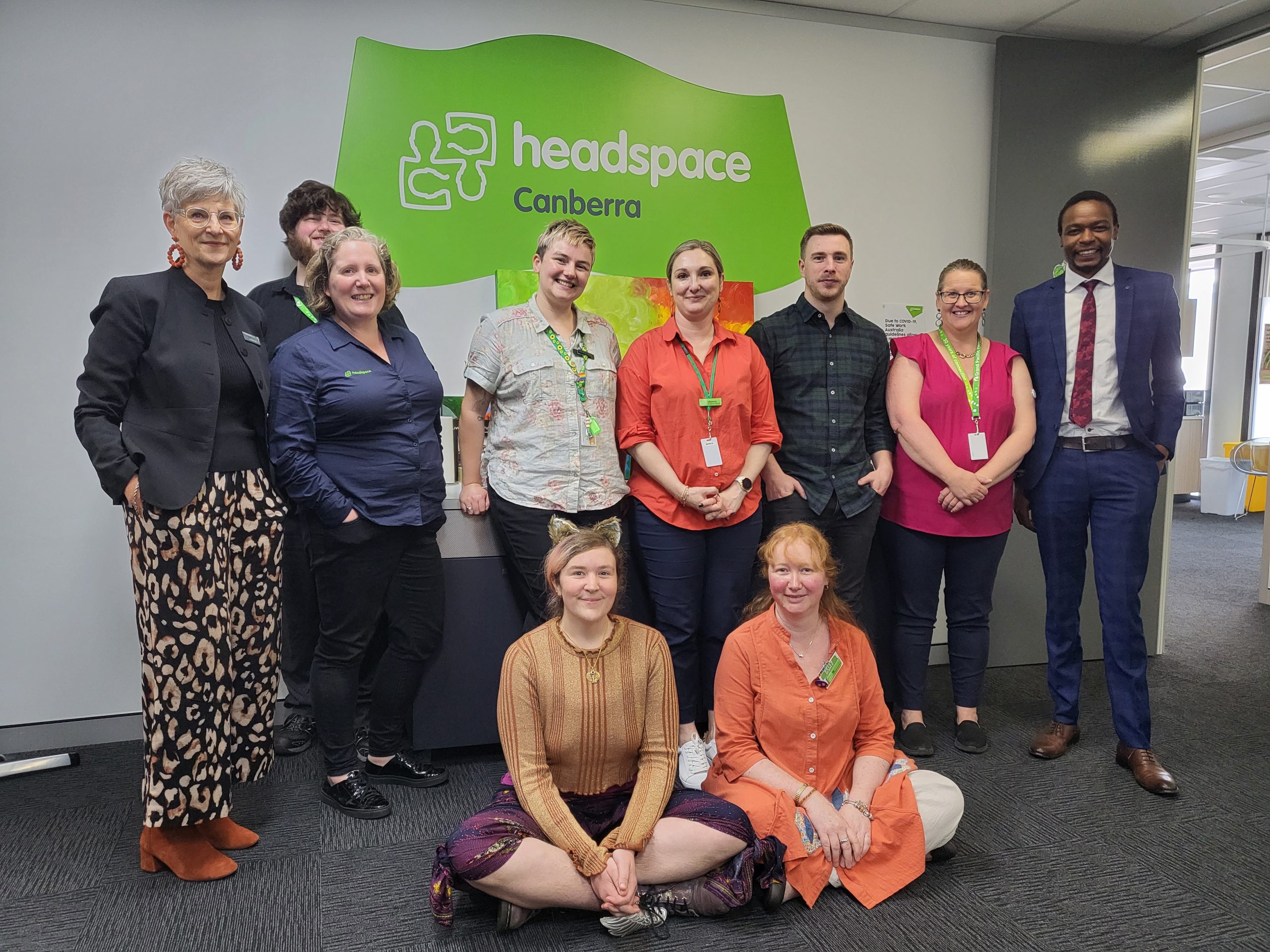The ACT has 2 headspace centres, one in Tuggeranong and the other in Braddon. CHN, ACT’s PHN, commissioned Grand Pacific Health to operate both centres, as the lead agency. ACT headspace centres work to build the resilience of young people (12-25 years) by delivering effective youth mental health services in partnership with young people, their families and their local communities. Over the last year, headspace Canberra and headspace Tuggeranong delivered services to 1,280 young people, of which 799 young people came to a headspace centre for the first time. Service demand is reflected through the 5,187 occasions of service. headspace Tuggeranong exceeded national averages in service delivery.
The following headspace services were delivered:
- Mental Health Counselling – delivered by qualified mental health practitioners offering time limited, evidence-based counselling services.
- Online and phone support – headspace has a range of ways to support young people both online or by phone. Young people can get support for their mental health by simply creating a headspace account.
- GP support – support to address physical and sexual health issues, as well as mental health consultations by a GP skilled in working with young people.
- AOD support – support to address issues with Alcohol and other drugs delivered on site by Directions Health.
- Individual Placement and Support Program – provides in person, one-on-one support for your work and study goals. IPS Vocational Specialists will collaborate with a young person’s mental health worker to ensure the support they receive helps them achieve their goals.
- Peer support – access to a trained peer worker, who uses their own experiences of a mental health issue to provide support and role modelling as well as linking with services and supports both within headspace and the community.
- Care coordination– support to link with the services and supports in the community that can support recovery.
- Family Supports– individual and group interventions that can support families and friends to more effectively support their young person’s recovery.
- Volunteering– opportunity for young people to join the Youth Reference Groups and work with other young people to inform service delivery in the centres and deliver community activities.
- Community Engagement– a range of community development and education programs delivered in partnership with other agencies across the Canberra region.

Good news story – headspace Canberra
A young person attended headspace Canberra and was seeing a Youth Counsellor under the 6-session model. The young person presented with severe anxiety, poor school attendance and performance, as well as constant arguments with her parents at home. During the sessions, the young person reported that constant bullying and peer pressure from her peers led to the deterioration of her mental health, which also led to deliberate self-harm and hospitalisation.
The Clinician worked on coping strategies such as breathing techniques for when the young person felt overwhelmed, as well as assertive communication strategies when the young person felt she was being peer pressured, to prioritise her boundaries.
During one of the sessions, the young person’s mother was present where it was discussed that the young person would like to move schools to be with her other friends. The young person stated that her parents didn’t listen to her. Her mother began to cry as she conveyed that she had become frustrated and numb over the same stories of bullying and that she didn’t know what to do anymore. The clinician discussed with the mother that the young person may just need someone to listen and validate her feelings so she could express her difficulties at school, to which the young person’s mother agreed. With the help of a Youth Care Coordinator at headspace Canberra, a support letter was developed.
A few weeks later the Clinician received an email from the young person’s mother, stating that the young person wasn’t needing to attend headspace anymore as she had successfully transferred into the new school. The young person was settling in well, had been attending all her classes, that there had been no conflict at home, and most importantly was very happy. The young person had also discussed strategies in session to avoid self-harming behaviour and utilised the sessions to talk about her own beliefs and motivations for not engaging in self-harm.
